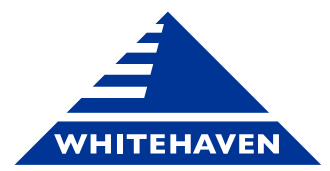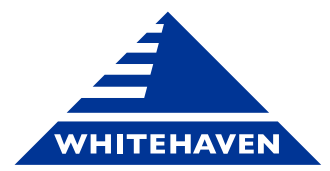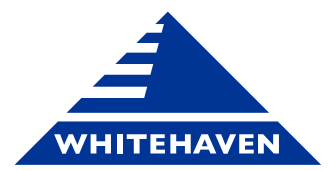Compliance Audit
Equipment Owner Information
-
Company
-
Phone Number
-
Email Address
Equipment Information
-
Make
-
Model
-
Year
-
ID/ Call Sign
-
Registration Number
-
Serial Number/ VIN
Inspector Information
-
Name
-
Company
-
Date of Inspection
-
Signature
Compliance Audit
-
Is the equipment clean and tidy?
-
What is the equipment body condition? Is the body integrity compromised through damage, oxidisation, age and/or<br>general wear and tear.
-
Are there any equipment modifications and/or attachments evident?
-
All emergency stops are clearly identified?
-
Are all controls, levers and switches labelled correctly?
-
Is the lockable isolation point/s identified?
-
Fire extinguisher location labels are fitted?
-
Is appropriate warning signage installed? (hot, working at heights, 3 points of contact etc.)*
-
The fuel tank has content labelling?
-
The hydraulic tank has content labelling?
-
Are water tank contents clearly labelled and contain labelling for non-potable water?*
-
All relevant lifting equipment has rated capacity labelling (WLL etc.)?*
-
Is there adequate reflective stripping down both sides of unit. (is it in effective condition)
-
There are equipment identification labels on sides and rear of equipment (reflective sign or letters as per site size requirements)?*
-
All control panel gauges are intact, clear and operable?
-
Are all controls, levers and switches operable and in good condition?
-
What is the condition of the operators platform? (security, mounting, rated, no crack or corrosion)
-
How is the cleanliness of the engine compartment?
-
Are there any hydrocarbon leaks?
-
What is the condition of the cooling system? (Radiator, water pump, coolant leaks, hose condition / clamps, fan, guarding, radiator cap has a manually operated pressure relief valve with overflow tube fitted)*
-
What is the condition of the oil cooler? (required guarding, oil leaks, fan, hydraulic motor, belts, mounts, cleanliness)
-
What is the condition of all belts? (adjustment, cracks)
-
What is the condition of the exhaust manifold/piping/muffler? (leaks, security, free from debris, easily accessed areas are lagged/guarded)
-
Does the unit have an electric start? (operational, retractable pull cord system can remain as an emergency backup only)
-
What is the general engine condition? (rotating parts guarded to Australian Standards)
-
What is the condition of the engine mounts? (security, cracks)
-
What is the condition of the wiring & air lines? (routing, separation, security)
-
What is the condition of the starter motor? (connections, mounting)
-
What is the condition of the alternator? (adequate guarding, mounting)
-
The condition of all hydraulic pumps & drives? (secure mounting and required guarding, shafts / couplings in good condition)
-
Is an approved lockable isolator/s installed that meets AS 4871? (test function)*
-
Are three emergency shutdown points fitted? (accessible from the ground, test function, accessibility risk assessed, preferably at rear, LHS & RHS)*
-
Are warning alarms/lights fitted and operational? - (low oil pressure, low air pressure and specific equipment operational alarms etc.)
-
Are there suitable circuit Breakers/fuses on the electrical system? (added accessories protected)
-
Is all wiring appropriate? (routing for protection against vibration, chafing, heat & corrosion)*
-
What is the condition of all batteries? (security, terminals for corrosion, cable condition, terminal covers and/or non-conductive insulation on inside of battery cover)*
-
The condition and placement of the fire extinguishers are appropriate for the equipment? (If unit is self-powered 1 x 9kg fire extinguisher tagged in date as per AS and pressure gauge in the green), test tags present, 6 monthly inspection, extinguishers accessible, free from obstruction and mounting brackets in good condition)*
-
What is the result from a visual check of ALL rims & tyres? (tyres meet relevant state legal requirements for on-road operation, inflated correctly, secure, not dented or buckled)
-
What is the condition of all wheel studs/nuts?
-
Is there wheel changing equipment available? (torque wrench, ability to remove torqued wheel nuts, complete set, serviceable condition, stored correctly)
-
Are all the mud guards installed? (secure, effective, general condition)
-
Are there wheel chocks available? (correct size, effective, at least one present). Vehicles with positive braking systems do not require this.
-
Is either a lockable gate or a safe way of retaining on-board drill pipe so that it is unable to move when travelling fitted and operational? (check it is effective)*
-
What is the base to chassis mounts condition? (secure, loose/broken bolts/nuts/welds)(condition, secure, welds, no cracks, no bolts missing/loose)
-
Do hydraulic jacks/out riggers hold the weight of Equipment? (no leaks, over centre valves fitted and effective, no creeping)
-
What is the condition of the hubs and axles after a visual inspection? (no obvious damage, oil leaks)
-
What is the condition of the hydraulic system? (tank, secure cap, leaks, lines, routing)
-
Are all quick link hydraulic couplings mounted at an angle >45 degrees from horizontal)
-
Are the load restraint anchor points suitable for the types of loads carried? (correct design, no obvious signs of damage, cracks)
-
Are all load restraints suitable for the types of loads being carried and in good working order? (undamaged, frayed etc.)
-
Does the unit have a pipe handling arm (VLC) fitted? (Annual crane safe inspection, condition, maintenance records, in use or locked out, VOC’s)
-
What is the condition of the rod loader/presenter area? (correct operation, approved visual/audible confirmation system as per the AS, condition of mounting, boom, hydraulic cylinders and hosing, chain / wire rope condition and tension)
-
Is there a protective circuit or system on the rod loader/presenter to ensure clamping devices cannot be inadvertently opened during operation and/or during a equipment failure?
-
Where there is potential for personnel to be exposed to possible dropped or falling objects (i.e. drill pipe from the rod loader or presenter) whilst equipment is in operation, FOPS is present and effective?
-
Is a system in place to ensure the safety of personnel where potential line-of-fire situations/risks exists (i.e. drill pipe from the rod loader, presenter and/or mast) whilst equipment is in operation?
-
There is an approved Working at Heights booklet available in the equipment?*
-
What is the condition of all ladders? (firmly secured, good condition, no cracks in welds, rust, non slip fitted, equipped as per AS 1657)*
-
What is the condition of all walkways and work platforms? (surfaces clean, free of objects, non-slip surface, mounting secure, no cracks or rust, hand railing rated as per AS 1657)*
-
What is the condition of all handrails and gates? (toe board, self-closing gates, all to AS 1657)*
-
Is a pre-start book available? (current, equipment issues captured, personnel can explain what they are looking at<br>when conducting a pre-start)*<br>
-
Are all OEM manuals available? (confirm manuals are available for all equipment such as drill rig, diesel engines, water pumps, etc.)*
-
Are all SWPs/WINs are available? (current, legible and personnel can access them in a timely manner)*
-
Are all maintenance records available on request? (service history & pre start check lists, includes work done to all parts of the equipment, check entries)*
-
An isolation procedure is available for all equipment? (must be equipment specific and comply to WHC standards)
-
Are all Safety Data Sheets (SDS) files, relating to anything in and/or on the equipment (formally MSDS), available?
-
An equipment specific risk register is available? (outlining specific hazards whilst operating that piece of equipment)
-
Equipment Passed:
-
Equipment Failed:
-
Add signature








